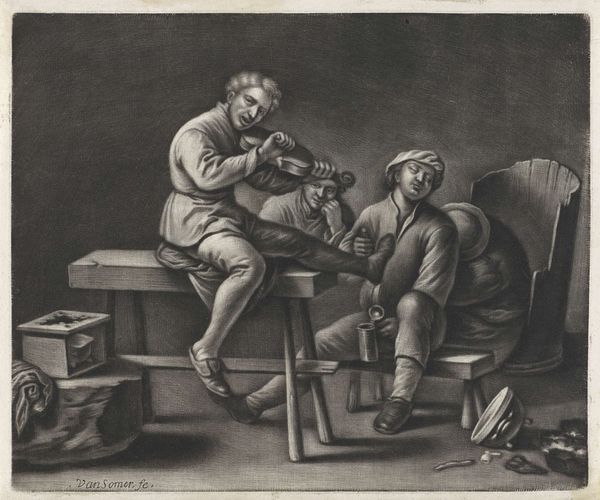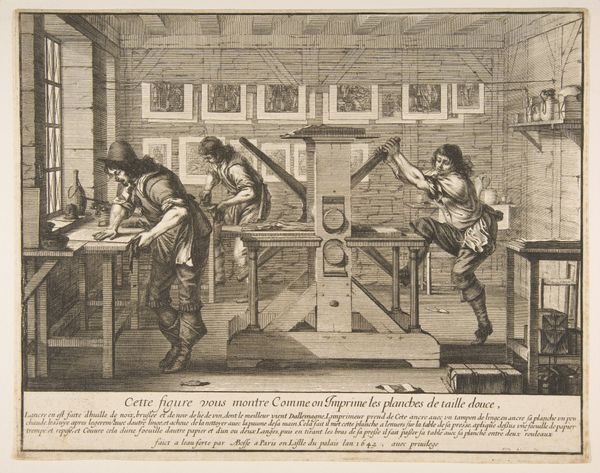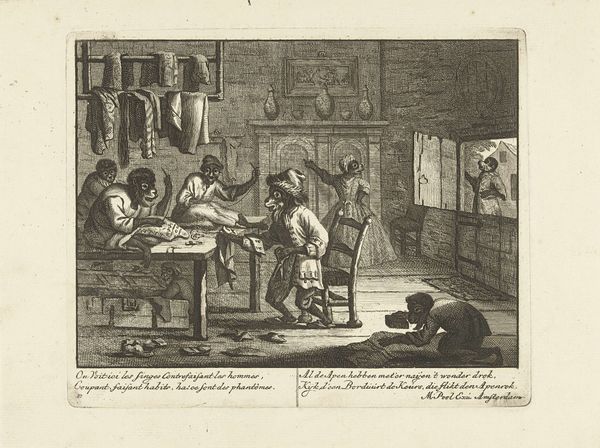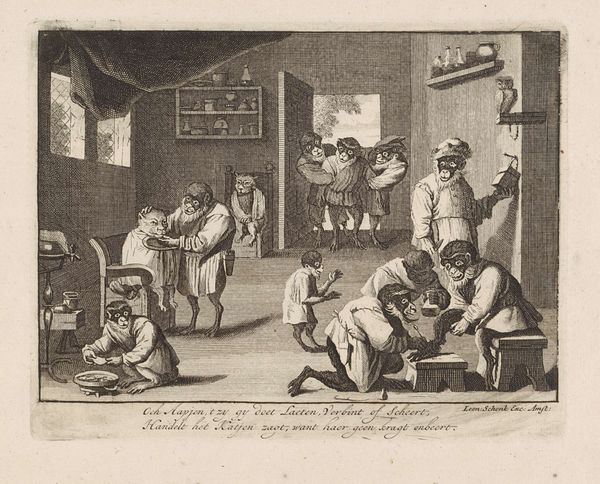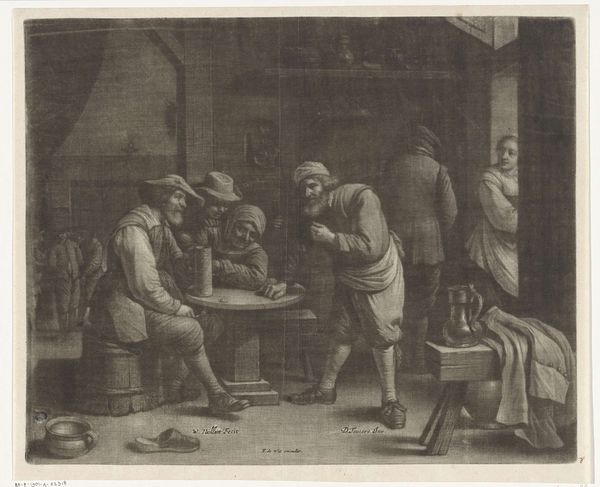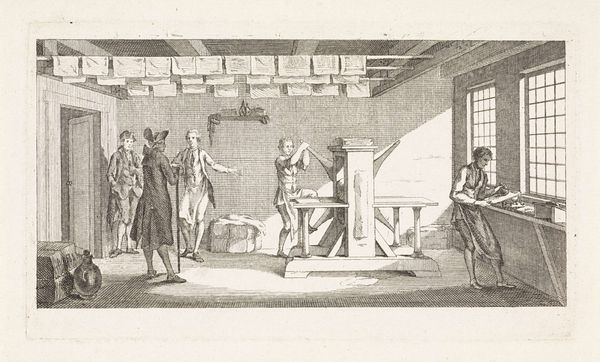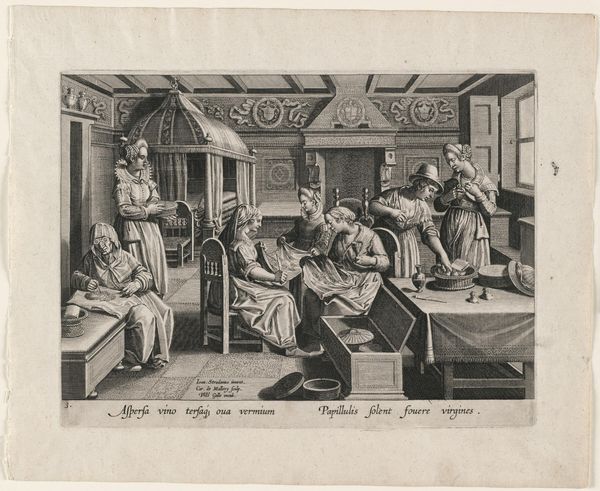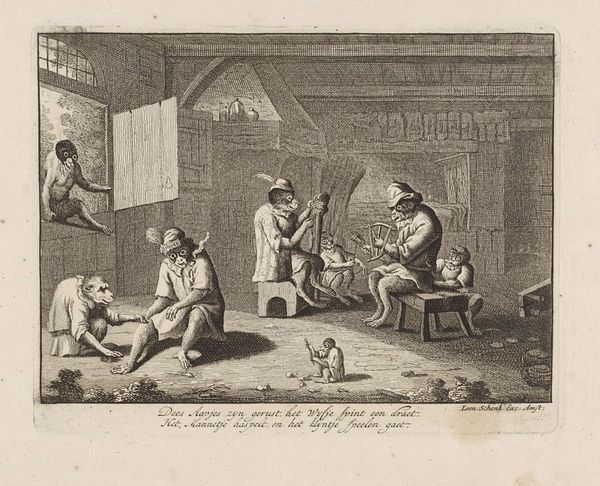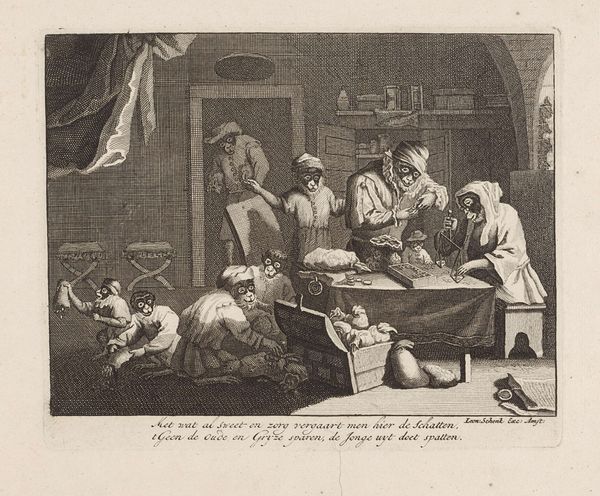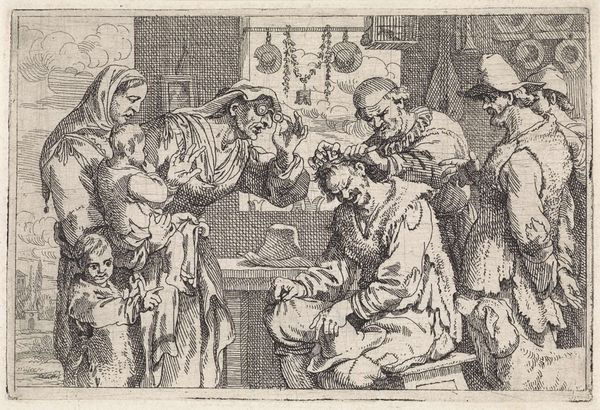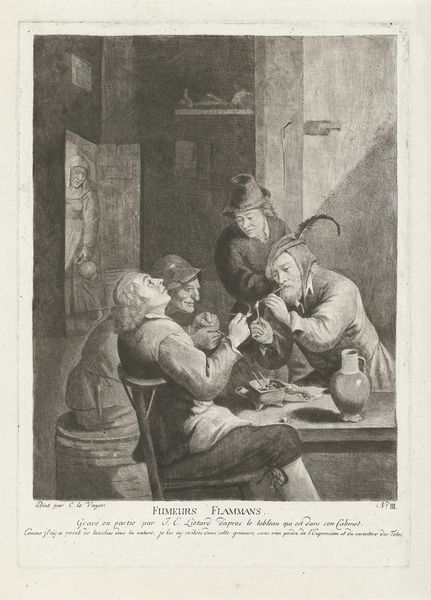
Dimensions: height 338 mm, width 410 mm
Copyright: Rijks Museum: Open Domain
Editor: So, this is "Stoelenmaker, spinster en zagende man," an engraving from sometime between 1700 and 1850 by Francesco Baretta. It depicts a scene of what looks like chair makers at work. The texture created through engraving gives it a stark, almost unsettling mood. How do you interpret this work? Curator: That "unsettling mood," as you describe it, I think, arises from the way it frames labor and domesticity within a very specific historical power structure. The so-called “genre scene” often obscures the realities of exploitation. Editor: Exploitation? Curator: Yes, consider who is missing from the narrative: the patrons who benefit from their labor. We're given this sanitized image of happy laborers, "lieto e contento" as the caption suggests, but what are the conditions of their work? Were women and men paid fairly? What impact did colonialism have on resource extraction needed for raw materials? And does this image obscure those histories? Editor: That makes me think about the absence of other materials, perhaps ones that would be used for more luxurious chairs? Curator: Exactly. The absence speaks volumes. It's easy to romanticize the “simplicity” of such a scene, but that simplicity often came at the cost of immense inequality and forced labor elsewhere. The tools, the limited resources... all these point to a pre-industrial reality steeped in class division and gendered roles, no? Editor: Absolutely. Thinking about it that way makes me reconsider the whole composition. I was so focused on the surface, on the "old engraving style," that I missed these deeper layers. Thank you! Curator: It's in uncovering those layers that the true potential of art history resides.
Comments
No comments
Be the first to comment and join the conversation on the ultimate creative platform.
